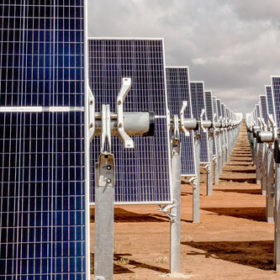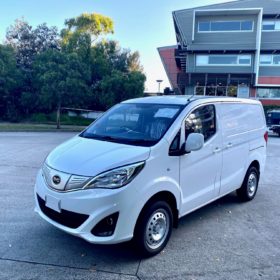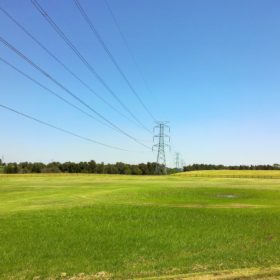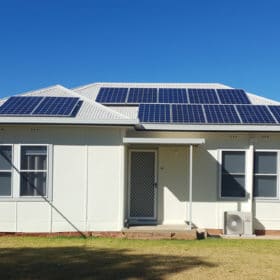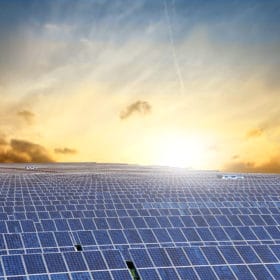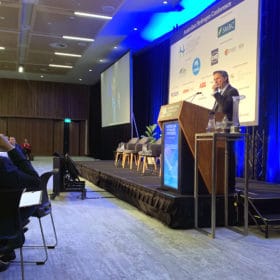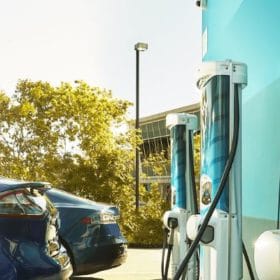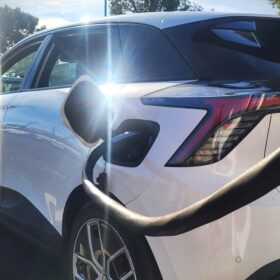Batteries boom as investment in large-scale renewables slumps to a 5-year low
New data released by the CEC and confirmed by industry experience, shows investors have become shy of committing to large-scale renewable projects in Australia, where government intervention has created uncertainty, and grid risk is virtually impossible to quantify — even with a prized connection agreement in hand.
New commercial e-vans hook up with Evie Networks charging for low-cost, low-carbon delivery services
E-commerce has gone through the roof since Covid-19 emerged, adding carbon kilometres to every purchase. A partnership between Trevor St Baker’s interests and TrueGreen Mobility is targeting the light-commercial vehicle class for an electric take over.
Critical energy transition infrastructure gets the regulatory green light!
TransGrid and ElectraNet have shovels at the ready to begin work on the long-planned and hard-won Project EnergyConnect, which will link three Australian states with much needed capacity for transmission of renewable energy.
Australia’s energy storage installed base to grow more than five times by 2030
In its latest report, IHS Markit predicts that energy storage installations in Australia will grow from 500 MW to more than 12.8 GW by 2030. Today, Australia makes up less than 3% of total global installations for battery energy storage and is the seventh largest market globally. By 2030, it is forecast to comprise 7% of global installations and become the third largest market. This growth will be largely driven by three distinct market segments: residential, standalone front-of-the-meter, and collocated with utility-scale renewables.
Rystad doubles IEA calculations on solar PV required by 2050 — think 50,000 TWh
Solar rules in any scenario of what the world needs to work towards over the coming three decades, to keep global warming under 1.5 degrees. But analysts at Rystad Energy have arrived at a far greater tally than recent IEA projections of how much PV people will be plugging into.
Commonwealth puts $20 mill into Amber, helping energy customers ditch exxie fossil fuels for renewables
That’s the Commonwealth Bank of Australia we’re talking about, not the Commonwealth Government … but someone has to lead the way. Sustainability-savvy CBA is placing an investment bet on innovative energy retailer, Amber.
Hydrogen start-ups targeted as Geelong Cluster joins national network
Victoria is accelerating plans to carve out a share of the evolving global hydrogen market, calling for Expressions of Interest from parties keen to play a role in the newly launched Greater Geelong Hydrogen Technology Cluster.
‘200 GW by 2040’: states vie for most hydrogen ambition at national conference
Western Australia’s Minister for Hydrogen Industry, Alannah MacTiernan, said her state plans to be producing 10 GW of green hydrogen in the next decade, with aspirations of getting to 200 GW by 2040. A parade of other state ministers followed MacTiernan addressing the Australian Hydrogen Conference, each eager to assert that their region will become the country’s hydrogen capital.
Australia experiences ‘never seen before’ level of collaboration with hydrogen
Larry Marshall, Chief Executive of the CSIRO, Australia’s national science agency, told Australia’s Hydrogen Conference that he was “highly optimistic” about Australia’s future, saying the country is currently at the “forefront” of hydrogen – a position not often held by our island state and one we must “dig our teeth into.”
Australia’s Tritium targets global expansion on back of $1.55 billion deal
Australian electric vehicle charging company Tritium has sealed a $1.55 billion merger deal with a United States-based special purpose acquisition company (SPAC) which will see it publicly listed on the Nasdaq.
